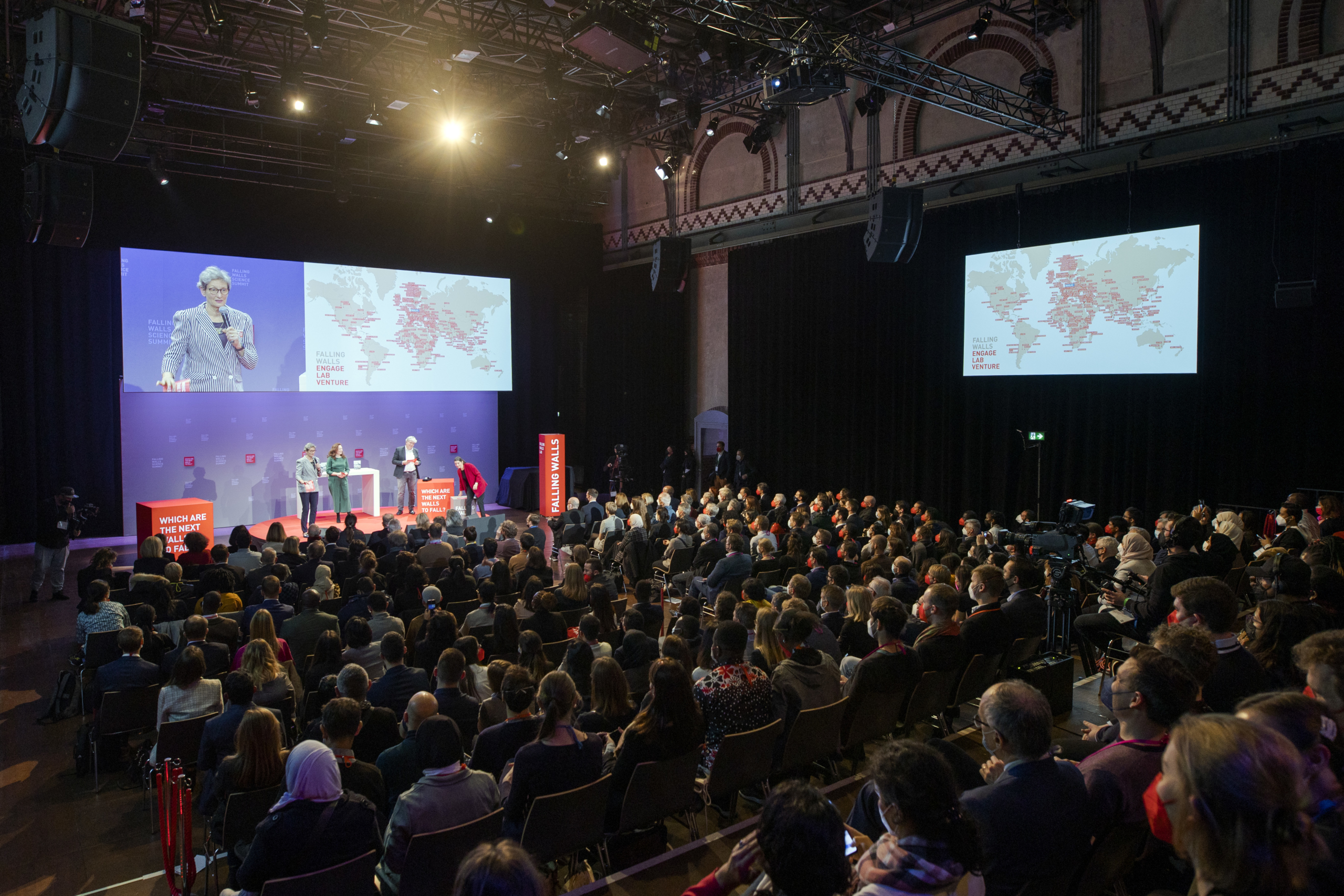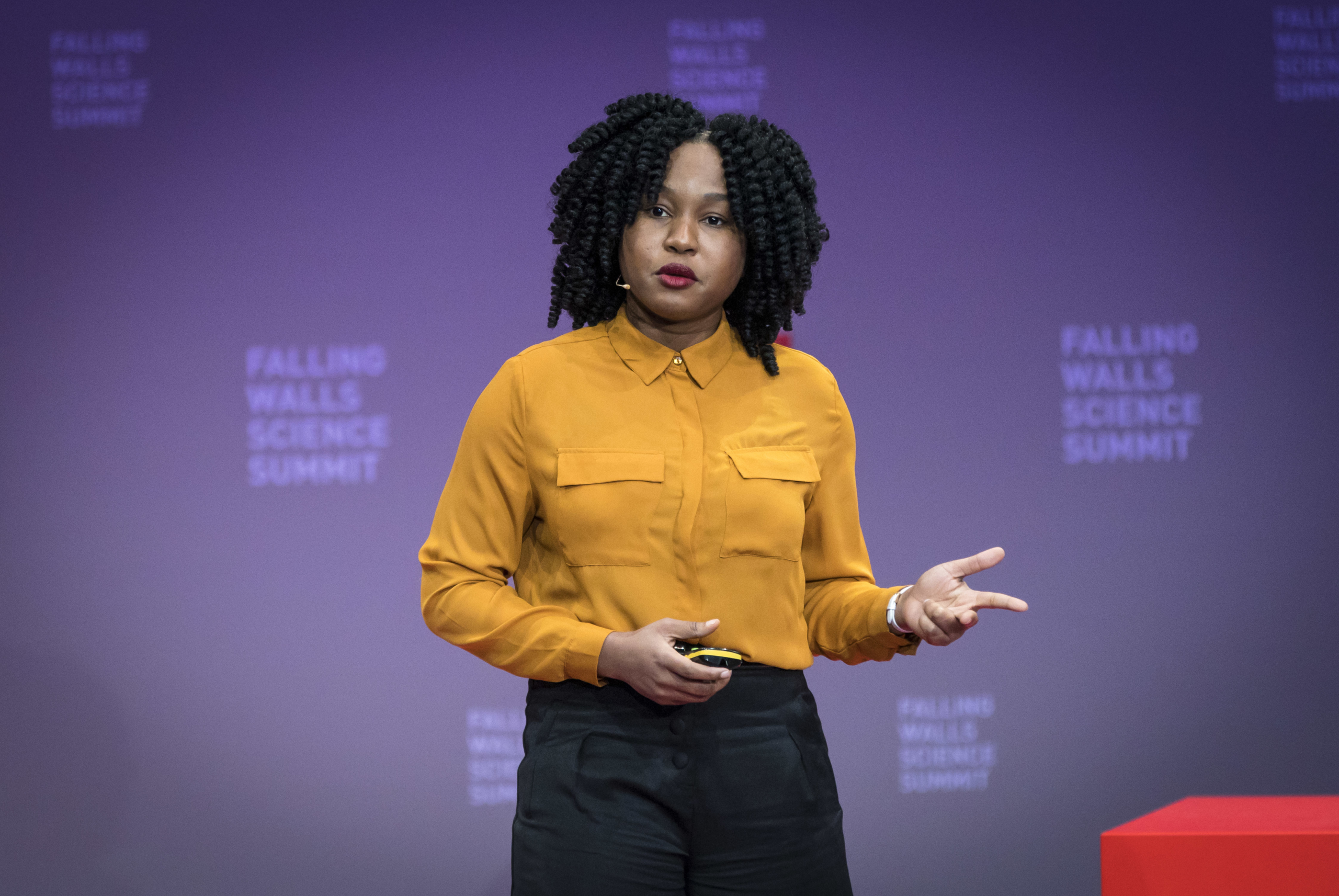KAUST students participate at Falling Walls 2021

Falling Walls Science Summit was a hybrid event in 2021 and took place from November 7-9.
Among the many science events that take place around the world, Falling Walls is one that continues to stand out from the crowd.
Grounded in the simple yet impactful purpose of driving global engagement with experts at the leading edge of change, the conference continues to resonate with not just KAUST but many academic institutions, businesses and governments internationally.
Inspired by the peaceful fall of the Berlin Wall, it asks a simple question: Which are the next walls to fall in science and society?
Specialists are invited to Berlin to discuss a variety of possible answers every year, the conference shining a spotlight on cutting-edge trends, exciting innovations and new ideas that have been cultivated in response to critical global issues.
This was no different in 2021. Here, the main day of the conference – held on November 9 on the anniversary of the fall of the Berlin Wall – was preceded by 48 hours of activities, the itinerary of which included:
- Falling Walls Venture: A program for science-based startups and investors
- Falling Walls Circle: A program for science strategists and decision-makers
- Falling Walls Lab: A program for young researchers and innovators
- Falling Walls Engage: A program for science engagement
For KAUST, Falling Walls Lab is of particular interest.
The program provides our students with the opportunity to participate in a world-class pitch competition and networking forum, acting as a bridge that brings together a diverse and interdisciplinary pool of students, researchers, and early-career professionals. Over the years KAUST students have benefited from invaluable experiences, including exposure to industry leaders and cutting-edge discussions.
For 2021, two of the 75 students shortlisted and invited to pitch their ideas for the competition were proudly from KAUST:
Praise O. Eromosele, Chemical Engineering (MS): Falling Walls Lab KAUST Winner with Breaking the Wall of Unaffordable Wastewater Treatment.
Fabiyan Angikath Shamsudheen, Chemical Engineering (Ph.D.): Falling Walls Lab KAUST Winner with Breaking the Wall of Sustainable Hydrogen from Waste.
Breaking the wall of unaffordable wastewater treatment
A master’s student studying chemical engineering at KAUST’s Advanced Membranes and Porous Materials Center, Praise Eromosele’s research is primarily focused on gas separations through membranes. Having seen Falling Walls advertised at KAUST she proceeded to find out more and, with the written encouragement of a friend, entered her application.
For the competition, Praise looked at the potential to use sawdust sourced from wood factories to remove heavy metal ions from industrial wastewater that continues to contaminate drinking water.
“The inspiration came from my hometown in Nigeria,” Praise explains.

KAUST chemical engineering MS student Praise O. Eromosele.
“We have a lot of industries in Port Harcourt. When they release wastewater, it goes directly into streams, and very little of it is treated. It’s one thing if bio-contaminates are not being removed, but it’s another thing if it’s waste containing heavy metal ions which are very poisonous.
“Using sawdust can reduce the amount of greenhouse gases being released from burning waste wood, and then treating the water is going to reduce the number of people dying. It’s a cheaper method because the cost of regular wastewater treatment is very high because the normal technology uses either activated carbon or ion-exchange resins.
“If we were to use this waste product, it would be solving two problems at the same time.”
Breaking the wall of sustainable hydrogen from waste
Fabian, meanwhile, is a Ph.D. student also studying chemical engineering at the Clean Combustion Research Center. Having spent much of his previous academic career looking at combustion engines, he transitioned his focus into hydrogen production after seeing great promise in the sector.
After participating in Falling Walls in 2020, Fabian’s topic of choice for 2021 looked at how hydrogen could be produced from waste using innovative molten metal reactor technology.

KAUST Ph.D. student Fabiyan Angikath Shamsudheen presenting at Falling Walls 2021.
“By taking plastic or vacuum residual oil from the bottom fraction of refineries, you can send it to the reactor and break it down,” Fabian explains. “In scientific terms, it’s called pyrolysis.
“Economically I’ve found that this is cheaper than producing hydrogen from water electrolysis. Further, if the energy required for the endothermic reaction inside the reactor comes from a renewable source, then you don’t have any carbon dioxide emissions, so the hydrogen can be green hydrogen. And it’s economical as well, so there are three benefits.”
An eye-opening experience
Both KAUST participants, alongside the other 73 students invited to present their research, were given the spotlight to showcase their ground-breaking research to an esteemed global science community, this proving to be a truly invaluable experience.
For Fabian, it led to the chance to connect with a professor in California at the University of Santa Barbara who has been conducting similar research. He explains: “After coming from Falling Walls, I emailed that professor, citing all the details, and he replied, and actually we are in discussions now, all because of Falling Walls.”
For Praise, meanwhile, it revealed that the gap between academia and real-world application can be bridged in a variety of attainable ways.
“When you’re conducting research, especially if you don’t have industrial experience, it’s a little bit hard to see how it can turn into a product. But Falling Walls has given me the motivation to believe that I can do more – far more than I’m doing now – and that I have a lot of potential,” she explains.
“I would encourage all KAUST students to participate in the Falling walls. The very ability to put yourself out there… put your work out there, learn how to present it, even if all you get from it is the coaching sessions… it totally changes you.
“I would encourage every single person to not hesitate to participate.”

